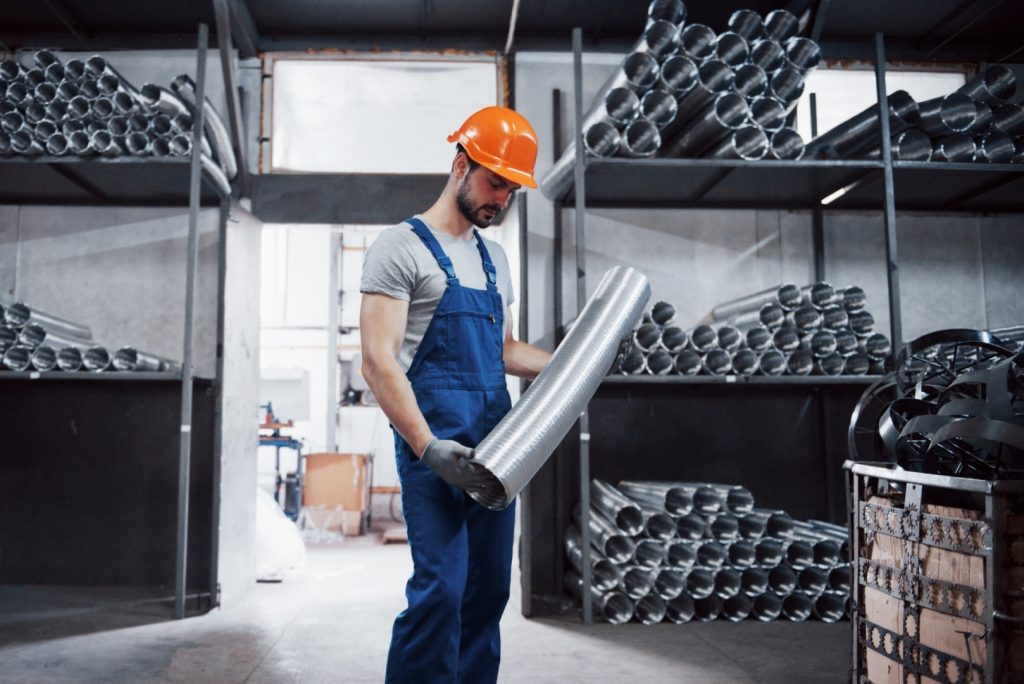At Metro Steel, we understand the importance of steel processing in manufacturing. That’s why we offer a range of steel services tailored to meet your specific needs. We’re dedicated to providing high-quality steel solutions that cater to a wide range of construction needs. One question we often get asked is, “Why is steel the preferred material for building structures?” The answer lies in the numerous advantages that steel offers over other construction materials.
Why Steel is the Preferred Material for Building Structures?
In the world of construction, the choice of material plays a pivotal role in determining the strength, durability, and longevity of a structure. Among the myriad options available, steel stands out as a top contender. But what makes steel the go-to choice for many builders and architects?
The Strength of Steel
Steel is synonymous with strength. Its lightweight nature belies its ability to support vast weights without succumbing to bending or breaking. This inherent strength makes it perfect for buildings designed to bear heavy loads or withstand challenging weather conditions.
Durability and Longevity
Beyond its strength, steel boasts impressive durability. It stands resilient against wear and tear, corrosion, and even pests. When maintained appropriately, steel structures can stand tall for decades, marking them as a prudent choice for long-term investments.
Sustainability and Eco-Friendliness
In today’s environmentally-conscious world, steel shines as a beacon of sustainability. It’s 100% recyclable, and the act of recycling steel consumes far less energy than producing new steel. Opting for steel isn’t just a decision for the present; it’s a nod to a greener future.
Flexibility and Versatility
Steel’s adaptability is one of its unsung strengths. It can be shaped and resized to fit a plethora of designs, giving architects the freedom to bring their most innovative visions to life. From quaint homes to sprawling commercial hubs, steel’s versatility is unmatched.
Ease of Construction
Prefabrication is a hallmark of steel structures. Components are crafted off-site and then assembled at the construction location. This streamlined process translates to quicker construction timelines and reduced labor costs.
The Evolution of Steel in Construction
Historically, the evolution of construction materials has been a testament to human ingenuity. From mud bricks to timber, each era had its preferred material. However, the industrial revolution ushered in the age of steel, transforming city skylines and architectural paradigms.
Innovation in Steel Production
Advancements in metallurgy have refined steel production methods, leading to the creation of various steel grades and alloys. These innovations cater to specific construction needs, from earthquake-resistant structures to skyscrapers that touch the clouds. The ability to customize steel’s properties has expanded its applications, making it a staple in modern infrastructure.
Thermal and Acoustic Properties
Steel’s benefits aren’t limited to just strength and flexibility. Modern steel variants offer excellent thermal and acoustic insulation. Structures built with steel can maintain internal temperatures more efficiently, leading to energy savings. Additionally, steel’s acoustic properties ensure that external noises are minimized, creating serene interiors in even the busiest urban environments.
Safety and Fire Resistance
Safety is paramount in construction, and steel offers an added layer of protection. It’s inherently fire-resistant, meaning it can withstand high temperatures without losing its structural integrity. This quality not only safeguards occupants but also reduces potential damages, making steel buildings more insurable and reducing premiums.
Economic Benefits
From an economic standpoint, steel offers significant advantages. While the initial investment might be comparable to other materials, the long-term savings are substantial. Reduced maintenance costs, longer lifespan, and energy savings contribute to a lower total cost of ownership. Furthermore, the speedier construction timelines associated with steel mean projects can be completed faster, leading to quicker returns on investment.
Adaptable to Modern Design Trends
The aesthetic appeal of steel is often underappreciated. With the rise of minimalist and industrial design trends, steel’s sleek and modern look has become increasingly desirable. Its ability to be molded into slender, elegant forms allows architects to push the boundaries of design, creating structures that are as much art as they are functional edifices.
The Global Shift Towards Steel
Around the world, there’s a palpable shift towards steel in construction. Its myriad benefits, from strength to sustainability, make it an obvious choice for those looking to invest in the future. Whether you’re embarking on a small residential project or a grand commercial venture, steel promises a foundation of strength and sustainability.
Steel’s prominence in the construction sector is no accident. Its blend of strength, durability, flexibility, and eco-friendliness makes it a standout choice for modern construction needs. As we continue to build and innovate, steel remains at the forefront, promising structures that not only stand the test of time but also pave the way for a sustainable future. If you’re on the cusp of a construction endeavor, steel might just be the answer you’ve been searching for.
 Talk to an Expert (07) 3204 1000
Talk to an Expert (07) 3204 1000 Working Hours - Mon – Fri 7:00 AM – 4:00 PM
Working Hours - Mon – Fri 7:00 AM – 4:00 PM
